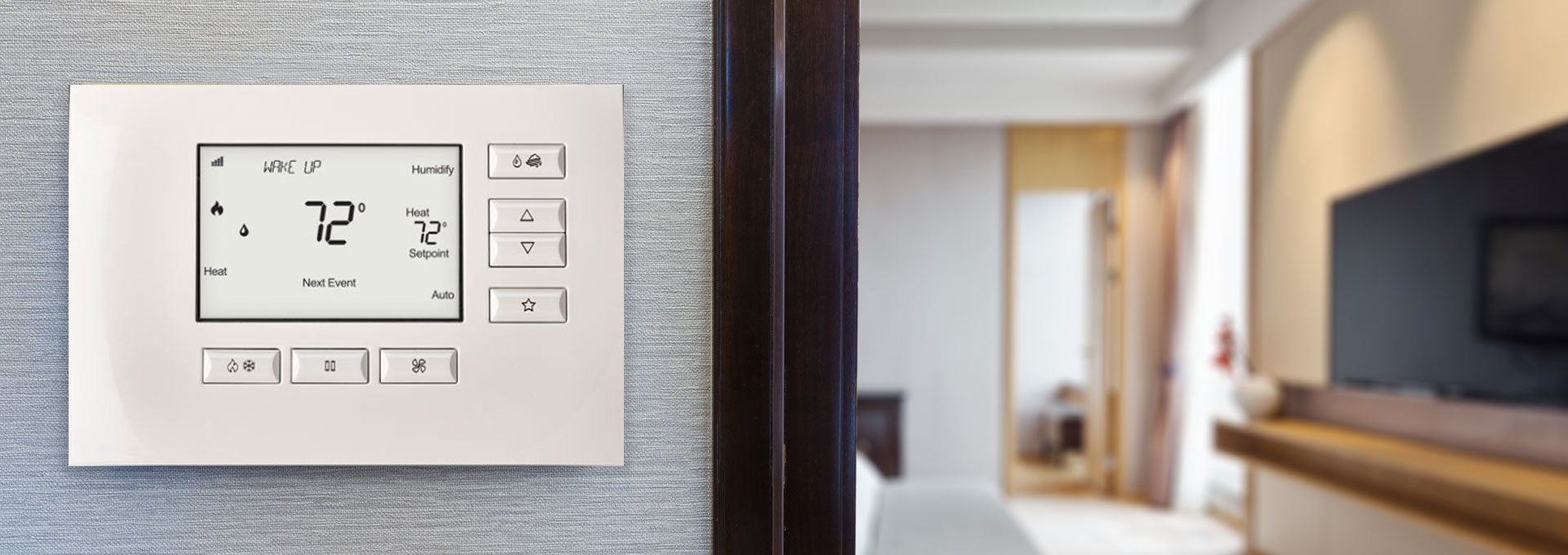Control4 Thermostat – Connect Any VRF HVAC


Searching for HVAC integration solutions makes you probably wonder about the HVAC system as a whole. Not just where to connect the wires. After all, when you are trying to connect a Control4 Thermostat to VRF systems such as Daikin, Mitsubishi, LG, Samsung, Fujitsu, Gree VRF, you might feel confused.
The traditional thermostat is the decision maker of the system, the brain, which engages with the Air Conditioning system using the well-known 5-wire:
If you wish to dive a tiny bit deeper: a thermostat dictates an on/off command to the relay it is connected to on the HVAC. Let's say you need to cool down a hot San Diego apartment to a comfortable 72°F. You turn on your AC in “Cool” mode and fix your set point to 72°.
The HVAC system keeps cooling until a thermostat senses 72°F (or a bit below). Once the room temperature reading is 72, the thermostat switches the HVAC unit’s cooling relay OFF, using the Cool (Y) wire.
A thermostat is the brain of the system, operating on a principle of: "I shut you off once you finish doing your job!". Pretty simple, right? And that's how we like it:
You see, we are all used to seeing that control panel as a thermostat, the brain of the system. However, the 2 or 3-wire thermostat is in fact not a thermostat at all. It is a Wired Remote Controller (WRC) that communicates with the VRF indoor unit, using a communication protocol.
The WRC that comes along with a VRF is essentially a control panel. It delivers users’ climate requirements ("Cool to 72°F") to the VRF indoor unit. That unit then translates the request into an engineering demand, and sets the unit to operate and deliver the desired climate conditions. Think of this process much like the Control4 central controller, managing all the devices you have installed. Your Home Automation system components and devices are communicating with each other using a network.
The HVAC manufacturers apply proprietary networks and closed communication for external access, using brand specific protocols. So, if you have a Daikin VRF or an LG, those two systems run the data on entirely different networks, using completely different protocols.
It’s like trying to make a digital I/O work with a communication bus. However, hold on before you close the browser and secretly curse the star we were born under - we have a better solution.
Now connect Control4 thermostat to the system like this:
Connecting Control4 thermostat this way is most beneficial to your user. We are all creatures of habits, and many of your customers still expect a wall mounted control device. In this case, the device is connected to the central controller, and not directly to the HVAC. So, your thermostat is operating through two intermediate devices that allow translating and connecting two distinct systems.